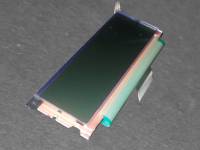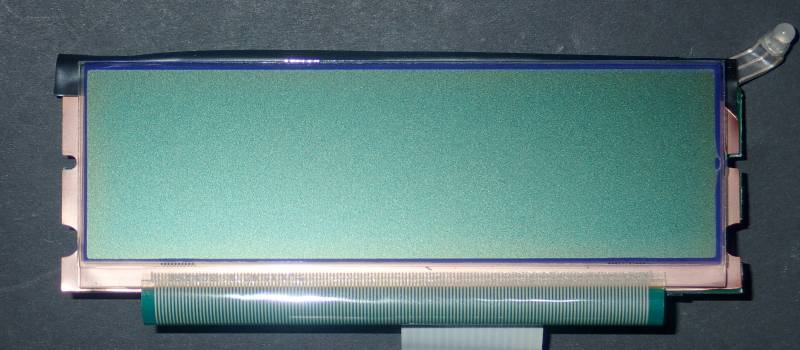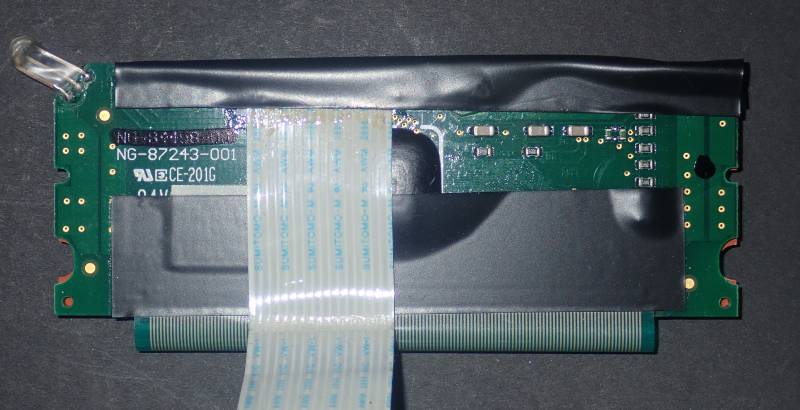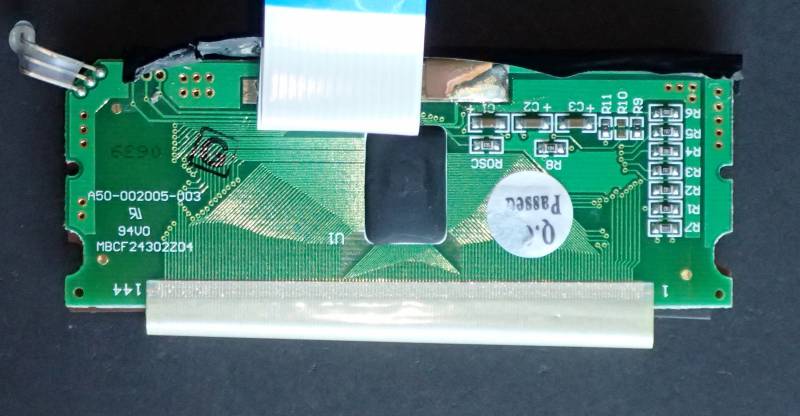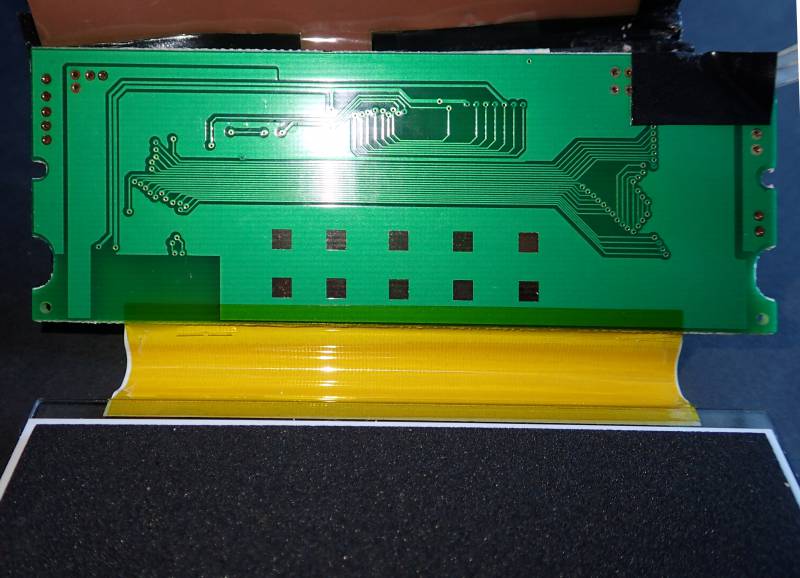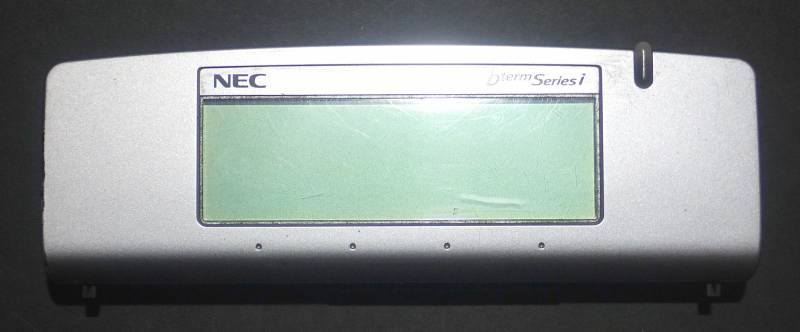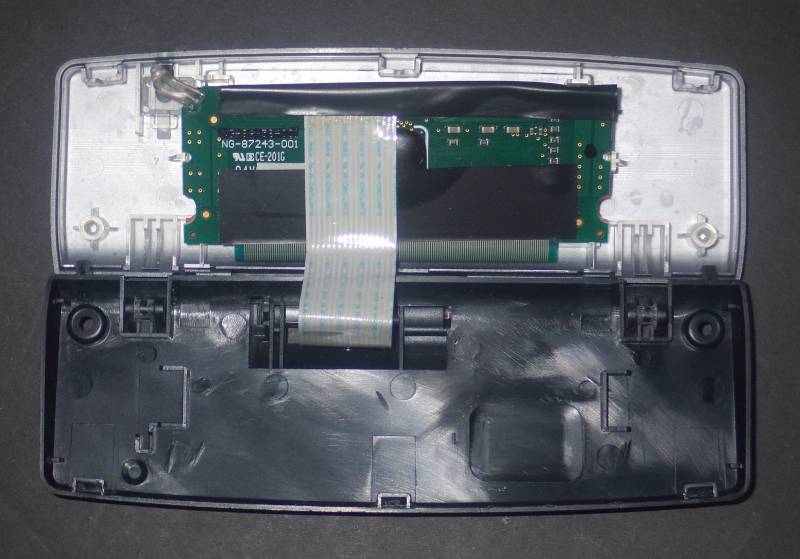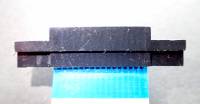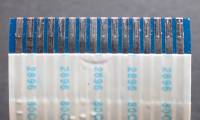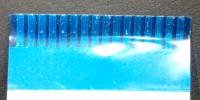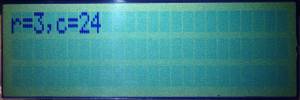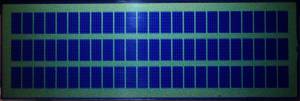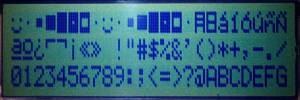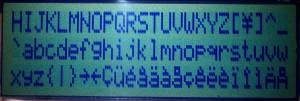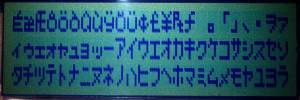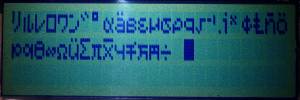| LCD Description | |
|---|---|
| Model | NG-87243-001 |
| Manufacturer | Samsung? |
| Recovered from | Nec DTR-16D-1A |
| Board IDs | NG-87243-001, |
| Alt. board IDs | A50-002005-003, MBCF24302Z04. A50-002005-002, MBC24302Z02 1) |
| LCD type | positive |
| Polarizer type | reflective |
| Columns | 24 |
| Rows | 3 |
| Char matrix | 5×7 |
| Driver IC | Hitachi HD44780 compatible (covered in epoxy) |
| Backlight | - |
| Arduino driver | LiquidCrystal_24x3.h2) |
| Connector | PCB flex cable |
| Num Pins | 16 |
| Pin spacing | 0.05” |
| Module size | 98 x 37 mm |
| Measured | Connector pin-out | Arduino test rig | ||||||
|---|---|---|---|---|---|---|---|---|
| Pin# | Main board | LCD board | LCD on | LCD off | IC pin | Label | Pin | colour |
| 1 | Green LED K | 1.7V | 0.0V | |||||
| 2 | LED A common | 0.8V | 0.0V | |||||
| 3 | Red LED K | 1.9V | 0.0V | |||||
| 4 | 2.9V | 0.1V | RS | |||||
| 5 | 0.4V | 0.1V | E | |||||
| 6 | 164k | 0.7V | 0.1V | D0 | ||||
| 7 | 1.4M | 0.6V | 0.2V | D1 | ||||
| 8 | 0.6V | 3.3V | D2 | |||||
| 9 | 0.3V | 3.3V | D3 | |||||
| 10 | 3.45k | 120k | 3.3V | 3.3V | Vcc | |||
| 11 | GND | GND | 0.0V | 0.0V | GND | |||
| 12 | 100k | 1.9V | 1.7V | Contrast | ||||
| 13 | NC | 120k | 3.3V | 3.3V | ||||
| 14 | NC | 0.0V | 0.0V | |||||
| 15 | GND | GND | 0.0V | 0.0V | 3) | |||
| 16 | NC | 0.0V | 0.0V | |||||
The connector pins aren't labeled on the LCD module, I have used the numbering on the phone board. This corresponds to viewing the LCD module from the back, with the flex connector at the top and numbering the pins 1 to 16 from left to right.
In the phones it seems to operate with a contrast voltage of 1.9V, but I had to supply 2.3V on my test rig, might be because supply voltage was only 3V rather than 3.3V.
The LCD modules can be swapped out from the phones quite simply, and are interchangeable between the DTR-16D and DTR-8D, DTH series and possibly other models. See https://www.commgear.com/Documents/LCD%20Replacement-Instructions.pdf. The LCD uses an adapter to plug into a socket within the phone, the socket on the phone board can be de-soldered and used as an easier way to connect to the LCD than trying to connect to the LCD's flex cable.
The module consists of two parts folded together: a PCB with the controller electronics, connected via a wide PCB flex cable to the LCD glass.
The slightly modified LCD library 4):
- liquidcrystal_24x3.h, SPI LCD library
- liquidcrystal_24x3.cpp, SPI LCD library
